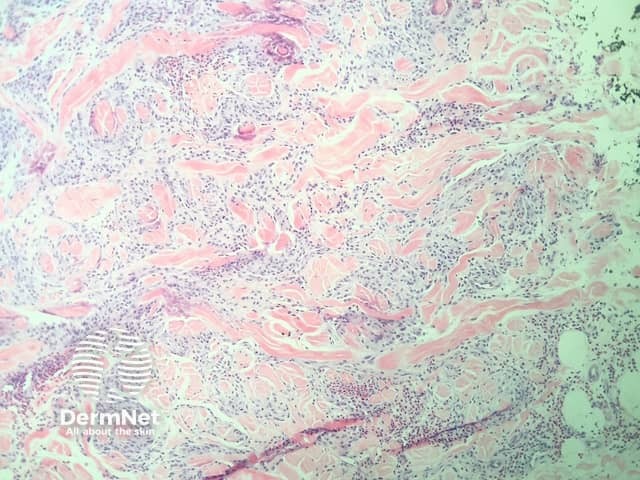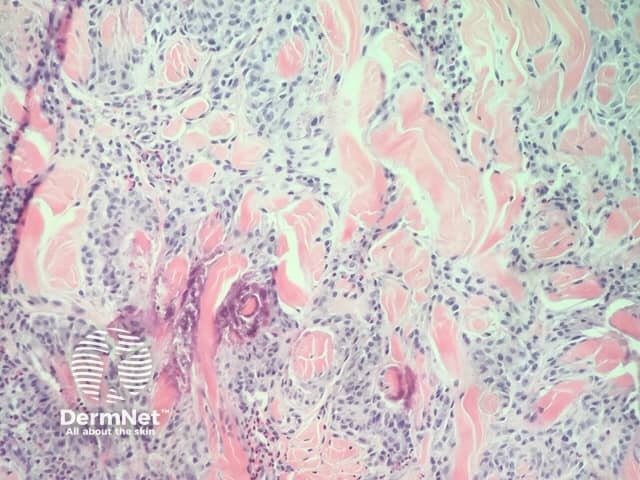Main menu
Common skin conditions

NEWS
Join DermNet PRO
Read more
Quick links
Churg-Strauss syndrome pathology — extra information
Autoimmune/autoinflammatory Diagnosis and testing
Churg-Strauss syndrome pathology
Author: Adjunct A/Prof Patrick Emanuel, Dermatopathologist, Clínica Ricardo Palma, Lima, Peru. DermNet Editor in Chief: Adjunct A/Prof Amanda Oakley. October 2018.
Introduction
Histology
Special studies
Differential diagnoses
Introduction
Eosinophilic granulomatosis with polyangiitis is also known as Churg–Strauss syndrome and allergic granulomatosis. It is an autoimmune disease which begins as with allergic symptoms (asthma/hay fever-like symptoms) and evolves to a vasculitis with associated tissue damage. Skin involvement occurs in about half of patients and presents as purpura, petechiae, cutaneous nodules, and papules.
Histology of eosinophilic granulomatosis with polyangiitis
In eosinophilic granulomatosis with polyangiitis, the histopathology is varied depending on the stage of the disease and the type of lesion biopsied. Usually, the presentation in the skin occurs in the later stages of the disease and the prominent features include tissue eosinophilia (often with eosinophilic deposition 'flame figures' on collagen fibres) and extravascular granulomas (figures 1–3). Later lesions characteristically show vasculitis, which involves small to medium-sized vessels in the dermis and subcutis.

Figure 1

Figure 2

Figure 3
Special studies for eosinophilic granulomatosis with polyangiitis
None are generally needed.
The differential diagnosis for eosinophilic granulomatosis with polyangiitis
Other forms of vasculitis do not generally show extravascular granulomas and the prominent tissue eosinophilia seen in eosinophilic granulomatosis with polyangiitis. Correlation with clinical and serological findings is usually essential to rule out other forms of vasculitis.
References
-
Davis MD, Daoud MS, McEvoy MT, Su WP. Cutaneous manifestations of Churg-Strauss syndrome: a clinicopathologic correlation. J Am Acad Dermatol. 1997 Aug;37(2 Pt 1):199-203. PubMed PMID: 9270504.
On DermNet
- Eosinophilic granulomatosis with polyangiitis
- Leukocytoclastic vasculitis pathology
- Dermatopathology glossary
- Dermatopathology index
Other websites
- Allergic granulomatosis and angiitis — PathologyOutlines.com
